Panasonic S1 Review: The Slow Motion Alone Is Worth It
The Panasonic S1 is the first full frame mirrorless camera from Panasonic, and right out of the gate it’s one of the most perfect cameras out there today, especially for hybrid photo and video shooters.
Most manufacturers have to cut or eliminate fairly standard features in their cameras in order to protect a robust lineup of consumer, prosumer, and cinema cameras. But because Panasonic has less offerings in certain camera markets, they can be more aggressive and include most of what camera buyers are looking for.

But of course, no camera is ever perfect, and the S1 does have some glaring drawbacks. It’s also the very first iteration of a new lineup, so there’s always some rough edges with any first generation product.
We took the Panasonic S1 with the 24-105mm f/4 kit lens out for a month of shooting, to try out different features as well as to get comfortable with using it in general. How does it compare to the other full frame mirrorless cameras out there today, as well as other mainstays like the GH5 and Canon Cinema cameras?
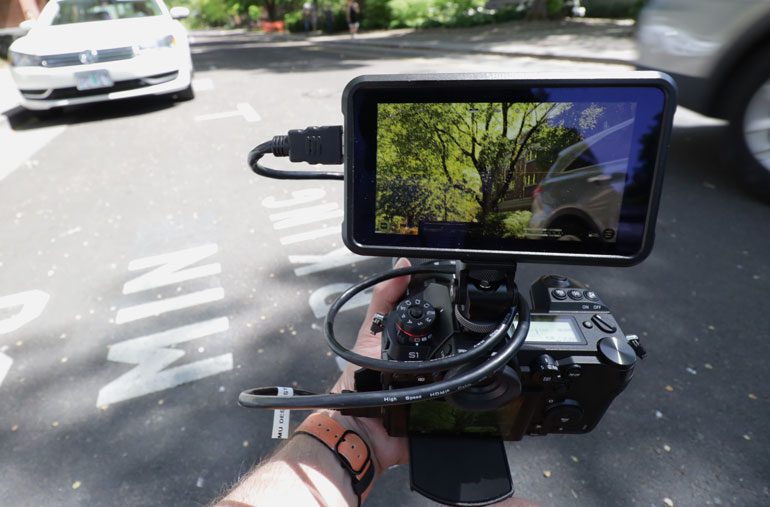
To our surprise, the most interesting part about the Panasonic S1 was how it handled slow motion - at 150fps and 180fps, no less. It quickly became our favorite slow mo camera in years. Does it also do regular mo' decently? Read on.
Panasonic S1 vs a Season of New Cameras
When it was announced, the Panasonic S1 and S1R - its high resolution sibling - were joining a highly crowded market of new cameras and lens systems.

The Nikon Z6 and Nikon Z7 were only a few months old, and they were quickly setting Nikon on a new path towards full frame mirrorless cameras featuring a brand new lens mount. Most of all, Nikon was finally attracting video shooters aggressively. Their partnership with Atomos to deliver 4K ProRes Raw via external HDMI is hard to ignore.
Canon has also forged a brand new path into its mirrorless investment, with the EOS R and new RF lenses, which are highly impressive, despite their cost and size. Many Canon DSLR and Cinema shooters have been waiting for a flagship full frame mirrorless camera to add to their arsenal of tools, and they finally got it.
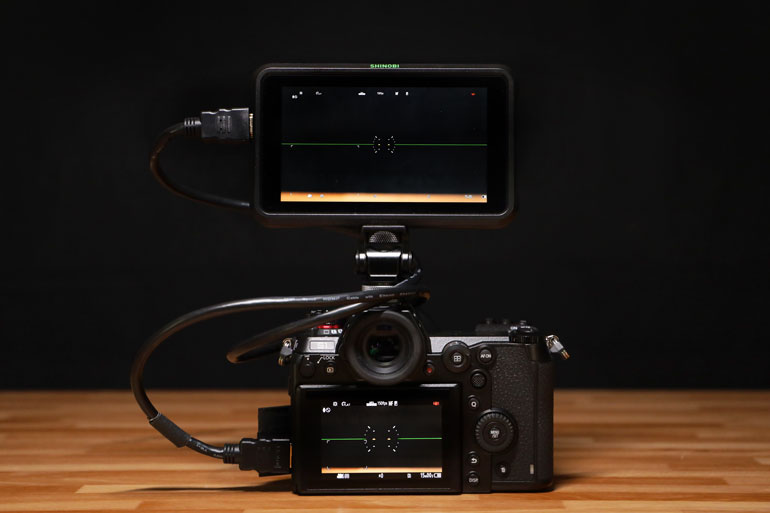
and Shinobi have become a must-have for recent cameras
There are of course some downsides with the EOS R, and many more shocking features left out in the little brother EOS RP, but still, the EOS R has already won many potential buyers who were on the fence about mirrorless. In fact, we bought an EOS R during the time we had the Panasonic S1 on loan, primarily because we already have lots of Canon EF and EF-S lenses.
There's also the Canon Variable ND filter that serves as an EF to RF lens adapter, which we strongly believe makes the EOS R a top contender for video shooters. There's drawbacks with the EOS R, of course, so it's not a clear cut decision yet.
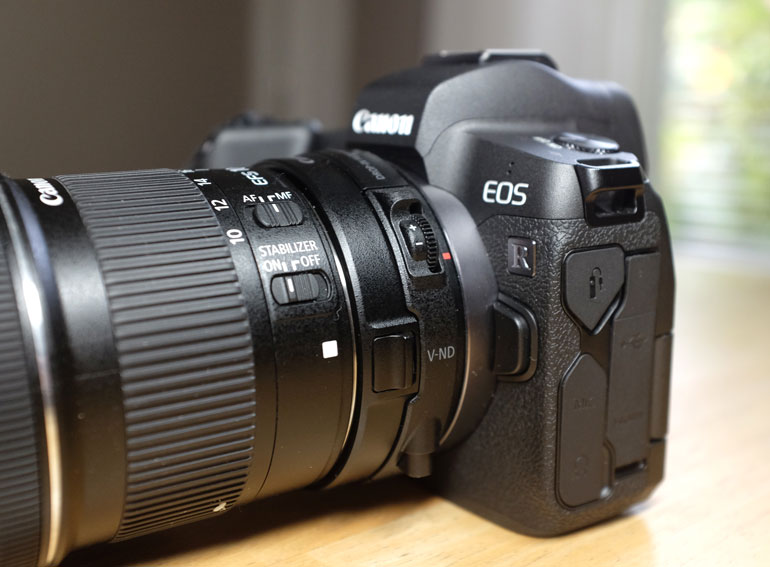
In the Sony world of full frame mirrorless, the A7R III continues to be a solid performer, but the A7 III has quickly become one of the best price-to-value deals out there. Sony has also released some other interesting cameras, like the A6400 (check out our recent Sony A6400 review), as well as the RX0 II. But for primarily video shooters, the wait for the A7S III continues.

The Sony A6400 checks off a lot of features for many budget shooters and vloggers
Meanwhile, Fujifilm has exploded in user adoption with their beautiful XT-3, which has all the specs and value for the price that anyone can ask for. It’s also got that superb Fuji color science, a great LOG image, and it's a joy to shoot with. Then there’s also the new XT-30 which is kind of like what the Canon EOS RP should have been but wasn’t.
So here comes Panasonic with something that makes even brand-loyal shooters do a double take. And suddenly the decision for what camera to get in 2019 becomes much more a decision of what camera ecosystem you want to invest in for the next few years.

Lenses for the Panasonic S1 and S1R

The S1 and S1R takes advantage of a new shared system with Leica and Sigma, called the L mount alliance. Although the lineup is still very limited, there are already quite a few available:
• Leica 50mm f/1.4
• Leica 75mm f/2
• Leica 90mm f/2
• Leica 16-35 f/3.5-4.5
• Leica 24-90mm f/2.8-4
• Leica 90-280mm f/2.8-4
• Leica 35mm f/2
• Panasonic 50mm f/1.4
• Panasonic 24-105mm f/4 Macro
• Panasonic 70-200mm f/4
The Leica lenses are of course more expensive than most people want to splurge on a brand new camera system. But the Panasonic 24-105mm f/4 kit lens is a solid lens that can stay on the S1 for 90% of shoots. It also doubles as a macro lens.
On the long end, the Panasonic 70-200mm f/4 can easily suit most interview and telephoto shooting needs. And the Panasonic 50mm f/1.4 is reserved for those low light needs.
Sigma has also significantly added to the L-mount ecosystem with its MC-21 Converter/Lens Adapter for EF to L-Mount. Although Sigma cannot guarantee that Canon EF lenses will work with the adapter, users have reported that they have no issues. That spells great news for Panasonic S1 and S1R shooters.
Novoflex also makes a Canon EF to Leica L-Mount adapter, but as with any third party adapter, there is no guarantee that every lens will work to its full capacity. Autofocus can be iffy, aperture settings may or may not work as intended, and image stabilization is never a given.

In our experience shooting docs for years, you really just need a good solid normal zoom lens, a telephoto, a low-light prime for specialty needs, and an ultrawide. So currently the one missing ingredient for the S1 is the ultrawide, and although it fits the focal length, the Leica 16-35 is way too expensive for most shooters.
If the Sigma adapter works as intended, then a Canon 16-35mm f/4 would be a perfect lens to complete the Panasonic S1 kit.

A photo taken with the Panasonic S1
For just getting started, however, the Panasonic 24-105mm will get most of the job done. It’s a great lens, considering with the S1 you can shoot 4K at 30fps at full frame, and 4k 60fps with an APS-C crop. That gives you a lot of span for one lens.
And of course, it's also a macro lens, with image stabilization, which makes it a powerhouse lens that may stay on the S1 the majority of its life.

In our experience, we also found the lens to be quite good at both video and photo shoots. It has good image clarity and decent depth of field for most shooters’ needs. It also has lens image stabilzation, which combined with the S1 5-axis in-body image stabilization (IBIS), makes it easy to use handheld, especially because the S1 is big and heavy and doesn’t shake as much as small, lightweight cameras.

Then of course there’s the ability to shoot 150fps in HD, with no sensor crop, which makes the S1 and 24-105mm one of our favorite systems for shooting slow motion. But we’ll get to that in a bit.
Pansonic S1 body

When you first take the S1 out of the box (which is one of the best we’ve ever seen, but we pay little heed to product packaging), you can’t help but feel like this camera came out of the German Bauhaus school of design. Or maybe something out of the 80s. This is a boxy camera, with edges that could cut a brick of cheese.
And then there’s the weight, which is what most reviewers are stuck on. Yes, it’s heavy. It’s nearly 4lbs with the 24-105mm lens. It feels incredibly heavy and big when you first hold it, no doubt.

But unless you’re particularly concerned about travel size and weight, a bulky and heavy camera is actually not a bad thing. For one, it’s much easier to get a good grip on it, to keep shots steady for photos but especially for video shooting, and over time, it starts to become an extension of your body.
With the size and weight of the S1, you also take on a different shooting confidence. You feel like you’re shooting with a grown up camera, rather than breezing around with a tiny point and shoot.

It really does affect how you interact with the world around you. It’s the difference between holding a Canon C300 mkII or a RED camera on a shoot, versus shooting with a little Canon T2i. Your demeanor changes, and so does your courage to get in and get better shots.
We loaned the S1 to some university filmmaking students, who at first held the S1 so nervously that they could have been handling a dead rat. But over a few weeks, they transformed and could confidently grip a camera and shoot like they mean it. That's the power of getting comfortable with an intimidating piece of equipment.

Plus, the shutter release button the S1 really feels incredible. It’s like pressing into an electronic button made of silk, and the response is instant. We’ve shot photos with many cameras and they tend to feel bouncy, plasticy, delayed, or otherwise less than satisfying. The S1 shutter release button is that good that we recommend everyone try it when you’re visiting a camera store.

As soon as you start shooting with the S1, you quickly forgive the bulkiness because all the buttons and dials are available and arranged almost exactly like they ought to be. There are three wheels, plus dedicated buttons for ISO and white balance, focus modes, and custom shooting profiles.


It really doesn’t take much for a DSLR or mirrorless camera to have all the buttons we need for shooting video. And yet, most cameras lack one or more of the standard adjustment dials. Because the S1 is not an entry level camera, it can afford to include everything we need and want, and to boost, the buttons are all properly positioned where our fingers and thumb can get to them.
On most cameras, something is almost always messed up with buttons. On the EOS R, for example, the menu button is to the left of the viewfinder, so you have to use your left hand or completely take your right hand off the grip to go in and change settings. Plus, it’s missing a few much needed dials (and there’s the added Multifunction bar that no one wants).

But on the Panasonic S1, we have everything we want, exactly where we want them. Scrolling through menus, adjusting settings, reviewing photos - these are tasks we do hundreds of times during a shoot, and it’s the difference between loving and hating a camera.
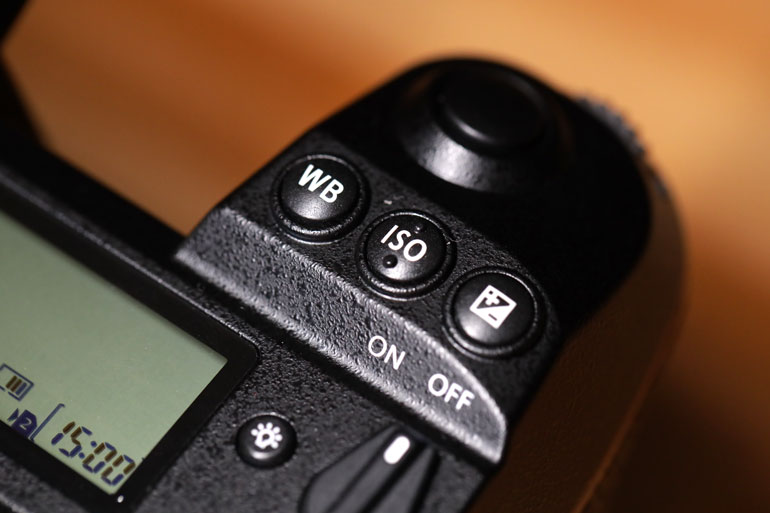
In addition to all the expected audio inputs, one thing we really appreciate with this camera is the full size HDMI port. Panasonic also includes an HDMI cable holder, to prevent the HDMI cable from getting loose or detached while shooting.
We sourced a heavy duty cable for our purposes, but we highly recommend the Sanho HypterThin HDMI cables. We use the HDMI Mini to Full HDMI all the time with our Atomos monitor.

Battery Power and Card Slot
The battery on the S1 is big, compared to most mirrorless cameras. That’s a good thing. We were able to shoot both photos and videos for days without having to replace the battery. It’s so big that we had to drive to a Fedex regional facility to pickup the package, because the lithium power was considered too hazardous to deliver to a local retailer.

Panasonic S1 battery next to the Canon LP-E6
The battery does take quite a long time to charge, over 2 hours in fact. But you can charge the battery while it’s inside the camera, which means you can plug in an external battery for shooting long timelapses or video.
The battery charger brilliantly has a USB output, so you can use your USB wall plug, or the included AC adapter if you prefer. But having the ability to charge the battery in camera, or plugging the charger into a USB-C outlet from a computer, means you have a lot of options when you’re on the road and you have limited outlets.

As for media cards, the S1 has two slots, one for SD/SDXC and one for XQD cards. The cards you use determine which video settings you can shoot with. XQD cards are faster than SD cards, but they're also more expensive. In the future, Panasonic has hinted at enabling CFExpress cards, that can record at a whopping 1400 mb/s.
For our purposes, we used an old SD card and were only limited to record time in HFS or slow motion mode. By default, the S1 has unlimited video record time, which is a nice bonus if you’re coming from mirrorless cameras that limit you to 30 minutes.

Screen and EVF
The EVF on the Panasonic S1 is fantastic. It's an OLED screen with 5.76 million dot resolution, 120fps refresh rate, and .005 second lag rating. It's easy to rely on for shooting both photos and video, and it's comfortable enough that it doesn't require an additional eyecup hack.
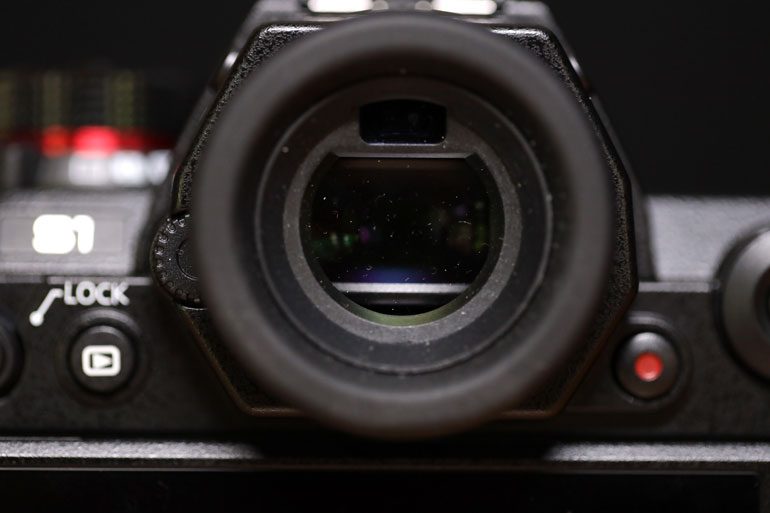
The LCD display is quite interesting. It's a touch screen that gives you full control of adjustments, as well as menus. And in our experience it is plenty bright in the sunniest of conditions.

Panasonic S1 display at full brightness, with Atomos Shinobi 1000 nit monitor above.
One of our favorite features of the S1 display is the excellent focus peaking, which has a lot of options for adjustment to suit your flavor. Many cameras tend to have weak focus peaking, but the S1 at full blast does an excellent job.

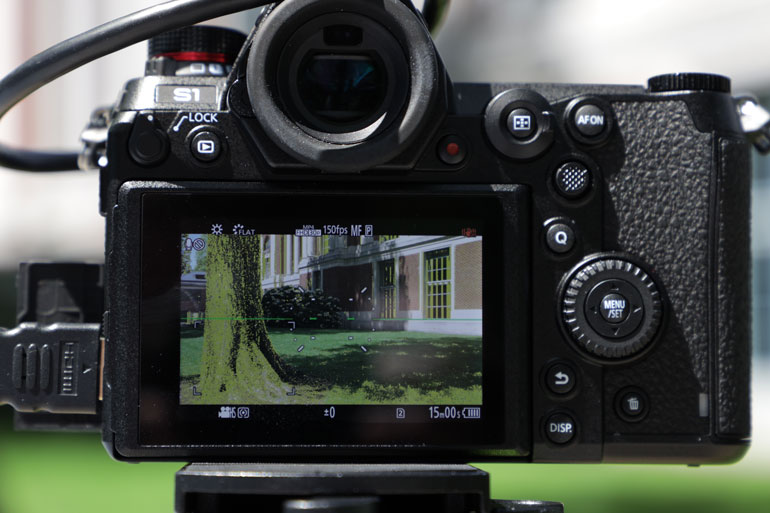
One aspect of the S1 that's getting some attention is its swivel screen. It's certainly a step up from non-articulating screens, but apart from being able to tilt up and down, we're not yet sold on the ability to twist the screen to the side.

We can certainly see how this could be a benefit in very specific scenarios, like if you're shooting in Live View and you want to stretch your arms out to get a shot from down below, to the side of your subject. Or if you're shooting an interview and you want to sit to the side of the camera while you're interviewing your subject.
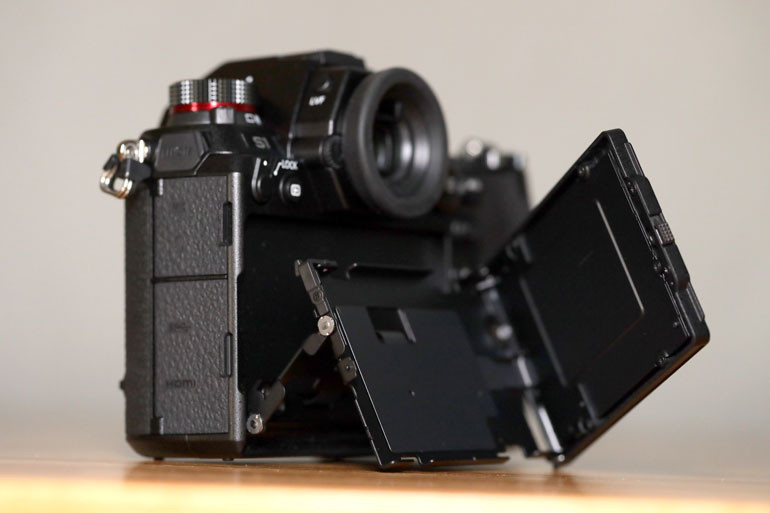
But as is the case with most tilt screens that remove the LCD display via precarious bolts and swiveling mechanisms, we aren't comfortable with the potential for damage if you accidentally push the screen too far or accidentally drop the camera.
For our buck, we think a simple tilting mechanism is good enough for most shooting scenarios. Of course, a fully articulating screen like the Canon EOS R is even better if you're shooting selfies or vlogging, but in the case of the S1, if you want to see yourself, you'll have to use an external monitor like the Atomos Shinobi.

Advanced Features
In both the Panasonic S1 and S1R, there are quite a bit of advanced features that we just couldn’t get to in our brief use. For example, there is the high resolution mode, which can capture 96-megapixels on the S1 and a whopping 187 megapixel RAW photos on the S1R, by shifting the image sensor over consecutive shots.



In the menu, there are many advanced settings in audio, monitoring, autofocus, and so on. There’s also a unique night mode feature if you’re shooting clandestine.
To learn more about the different advanced features of the Panasonic S1, we recommend watching the video review by Gerald Undone.
When you get a new camera, there are two approaches you can take as you're facing the learning curve. You can either be intimidated by all the features it has (and maybe even feel like you’re paying for features you’re not using), or you can feel good knowing your camera is a long-term investment that has much more up its sleeve as you grow into it.
Thankfully with the S1, the nested menu system is very easy to explore when you want to see everything the camera is capable of. Or you can ignore the majority of the settings and focus on the basics.
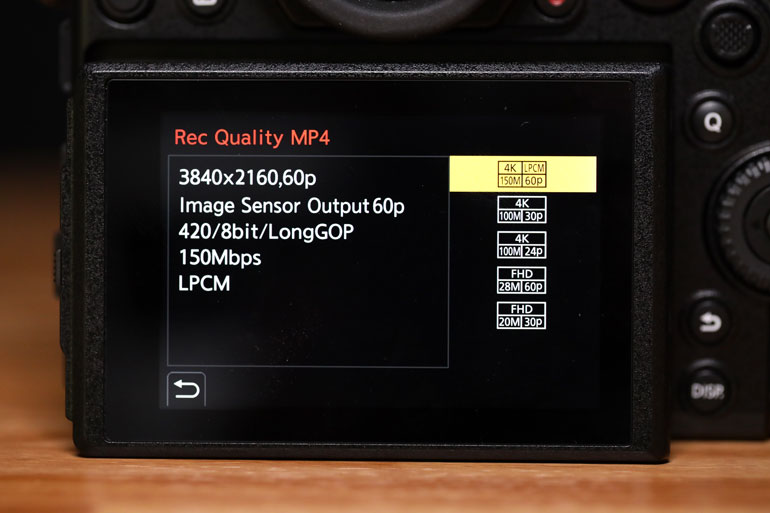
Panasonic S1 Slow Motion
Finally we get to our favorite part of the S1, its slow motion capabilities. Although the Panasonic GH5 has similar (or better) specs at nearly half the price - specs such as 180fps in HD and 4K at 60fps - the Micro Four Thirds mount makes it a little more difficult to achieve depth of field in slow motion.

On the Panasonic S1, you get full frame bokeh goodness at up to 150fps, which makes shooting wide angle slow motion a treat, as you get a fair amount of depth even when using the 24-105mm f/4 kit lens.
We've been having a blast shooting a variety of slow motion with the S1. Here's a short example of a quick trip to the basketball and soccer courts.
Overall, it's an incredibly easy system to use for slow motion, even handheld. We especially like it when paired with the lightweight Atomos Shinobi monitor, which you can also use to review clips right after shooting them.

But alas, nothing is perfect. The S1 has a strange limitation when shooting 150 or 180 fps. You're entirely limited to auto exposure. There's no adjusting aperture, or ISO, or shutter. Also the image stabilization and autofocus go away, but we can live with that.
It's a heavy camera that makes for much more stable slow motion shooting than most mirrorless cameras, so maintaing a fairly stable shot while pulling focus is not that difficult, especially with the focus peaking and using the Atomos Shinobi as a monitor.
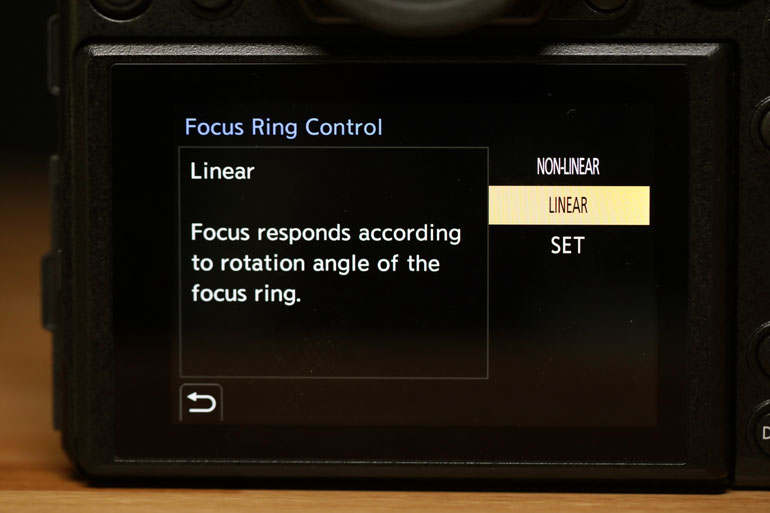
One thing we highly recommend is changing the lens fly-by-wire focusing mechanism to linear, which makes focus a thousand times easier as it doesn't speed up or slow down as you rotate the focus ring. If all fly-by-wire lenses had this option, we'd be in heaven. It really does make manual focus a breeze.
In addition to the auto exposure issue, another problem we ran into is you lose control of the camera when you stop recording, as it needs to process the video clip. This became a huge issue when we were waiting for a moment to occur, recording just to be safe, and then at some point our SD card reached the end of its speed limit.

Even if you have a brand new, speedy SDXC card, you still have to wait for the clip to process after stopping record. In professional slow motion scenarios, you can opt to shoot with a pre-roll, so as soon as you see the action happen, you press record, and it captures the previous few seconds seconds of action.
With the S1, you have to wait for just the right moment, hoping to press record at the beginning of action. And then if nothing is happening, and you stop record, then you can't use the camera for the few seconds it needs to process. And in those moments, you might miss the action entirely.

What's really frustrating is the only indicator for "you can't do anything right now because the camera is busy" is the card icon turning red. You may not notice that the record or menu button or anything else is not working, unless you pay attention to the little card icon. We missed out on several important moments because we didn't notice the red card icon and assumed we were recording.
And then of course there are other features that stop working entirely when you're in high speed video mode. These are little frustrations that could add up and make someone upset with the S1 entirely. But for how good the slow motion footage is, we think you can live with the limitations.

Panasonic S1 NEGATIVES - The Autofocus Isn't Great
If you've gotten this far, you are probably a little excited about the Panasonic S1, and even the S1R, which is the first full frame mirrorless camera to be able to shoot 4k 60fps with no crop.
But there are downsides, as with any new camera ecosystem. We mentioned above the limited lens choice, and the auto exposure in slow motion. But the S1 also has a low bitrate for its HD capture in regular mo.
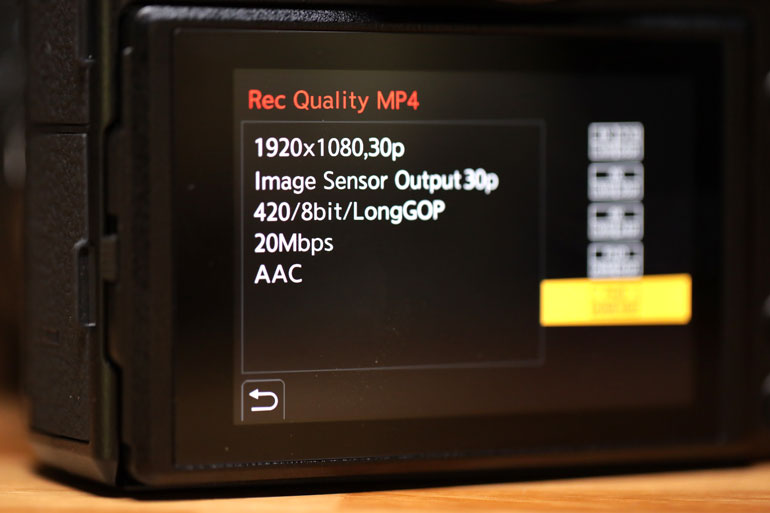
There's also the size and weight, which may scare some buyers who are looking for a lightweight mirrorless system.
But probably the biggest con right now is the autofocus system. It's great, maybe even better than the GH5/GH5S, but there are moments where it just doesn't work. You are framing your subject and yet the S1 continues to focus on the background. It only takes a few failed autofocus moments to start chipping away at your confidence in a camera.
Panasonic S1 Review Conclusion
The Panasonic S1 and S1R are built like tanks, and they look like them too. They are meant to be durable in just about any condition. We found the body to be a pleasure to use, and we got accustomed to the size and weight very quickly.
There’s also an optional battery grip that you can add to the camera, to not only increase the battery life but also the general weight and stability, and to aid in vertical shooting. We prefer to use battery grips on all our cameras, if only to be able to attach this Vello hand grip strap, which makes one handed shooting and holding a lot more comfortable and safe. Without the battery grip, you have to attach a hand strap to the bottom of the camera, which gets in the way of whatever quick release system you’re using.

In our month of shooting with the S1, we found the camera to be highly capable at photo capture and regular 24/30 fps video. But where it truly shines is the ability to capture high speed slow motion with clarity and depth of field that is unmatched by any other camera system.

A screengrab from a slow motion clip, with a touch of saturation added.
As with any new camera, there are rough edges that will be smoothed out over time, including a firmware update that will enable V-Log, CFExpress card capture at 1700 mb/s, and 4:2:2 10-bit 4k 60fps through the HDMI output. We also hope to see an improvement in the AF system, that will restore confidence for anyone who has ever lost a shot due to non-working AF.
In the meantime, we believe the Panasonic S1 is an incredible camera, especially paired with the 24-105mm kit lens. We've been able to hand it off to camera newbies and have them capture brilliant slow motion footage with little to no training.

For pro shooters who are looking to add a camera to their tool belt, the S1 and S1R might only make sense for Panasonic shooters who already use the GH4 or GH5/GH5S, or the EVA1 cinema camera. But for newcomers, the S1 could be the perfect one-size-fits-all camera that gets almost everything done.
What do you think about the S1? We'd love to hear your thoughts - send us a comment when you get a chance.
Panasonic S1 Body Only | Panasonic S1 with 24-105mm Kit

